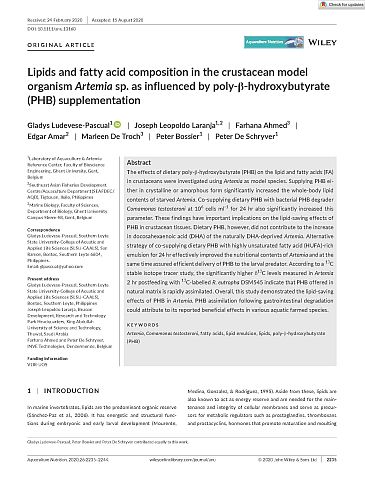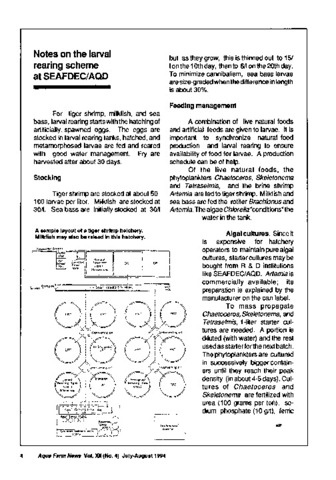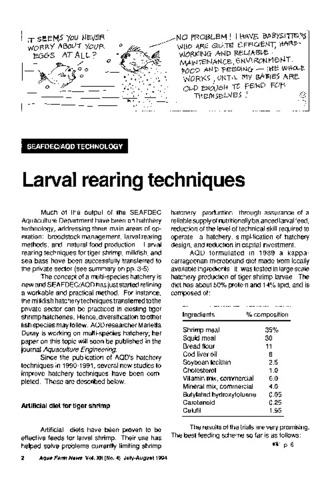Interaction between Rhodobacter sphaeroides and Harmful Algal Bloom (HAB) causing dinoflagellate Amphidinium carterae
Share
| dc.contributor.author | Cabalfin, Jec Jose Miguel C. | |
| dc.contributor.author | Lamzon, Joseph Dinesh H. | |
| dc.contributor.author | Serra, Vaughn Remos M. | |
| dc.contributor.author | Mediodia, Harold P. | |
| dc.contributor.author | Catedral, Demy D. | |
| dc.date.accessioned | 2020-09-23T02:31:35Z | |
| dc.date.available | 2020-09-23T02:31:35Z | |
| dc.date.issued | 2019 | |
| dc.identifier.citation | Cabalfin, J. J. M. C., Lamzon, J. D. H., Serra, V. R. M., Mediodia, H. P., & Catedral, D. D. (2019). Interaction between Rhodobacter sphaeroides and Harmful Algal Bloom (HAB) causing dinoflagellate Amphidinium carterae. Publiscience, 2(1), 159–164. | en |
| dc.identifier.issn | 2619-7359 | |
| dc.identifier.uri | http://hdl.handle.net/10862/5999 | |
| dc.description.abstract | The present study hopes to develop a further understanding regarding algal-bacteria interactions as an option for bioremediation. After the use of chemicals against the events of the red tide proved to be impractical due to its detrimental effects on the aquatic ecosystem, recent studies focused on bioremediation. To examine the algal – bacteria interactions, an in vitro co-culture system consisting of marine bacteria Rhodobacter sphaeroides and HAB – causing dinoflagellate Amphidinium carterae were used as the model organisms. The population count of each species in the co-culture were monitored for 14 days as well as positive (pure A. carterae) control and negative (pure Rb. sphaeroides) control. The co-culture system used for investigating the interactions was established based on the interdependence of the two organisms and later the bacteria would prevail over the dinoflagellate. The results of the population count shows an inverse progression on the growth between the two organisms. Furthermore, the analysis of the populations trend suggests that the bacteria growth was suppressed due to allelopathic interactions by the dinoflagellate specifically the production of toxins and chemical compounds detrimental to the growth of the bacteria proving that the bacteria was ineffective to mitigate the growth of the dinoflagellate. | en |
| dc.language.iso | en | en |
| dc.publisher | Research Unit of Philippine Science High School - Western Visayas Campus | en |
| dc.relation.uri | http://www.publiscience.org/wp-content/uploads/2020/04/Interaction-between-Rhodobacter-sphaeroides-and-Harmful-Algal-Bloom-HAB-causing-dinoflagellate-Amphidinium-carterae.pdf | en |
| dc.subject | Dinoflagellate | en |
| dc.subject | Rhodobacter sphaeroides | en |
| dc.title | Interaction between Rhodobacter sphaeroides and Harmful Algal Bloom (HAB) causing dinoflagellate Amphidinium carterae | en |
| dc.type | Article | en |
| dc.citation.volume | 2 | |
| dc.citation.issue | 1 | |
| dc.citation.spage | 159 | |
| dc.citation.epage | 164 | |
| dc.citation.journalTitle | Publiscience | en |
| dc.subject.asfa | bioremediation | en |
| dc.subject.asfa | mitigation | en |
| dc.subject.asfa | algal blooms | en |
| dc.subject.asfa | algal culture | en |
| dc.subject.asfa | Algae | en |
| dc.subject.asfa | sampling | en |
| dc.subject.asfa | interactions | en |
| dc.subject.scientificName | Amphidinium carterae | en |
Fail dalam item ini
| Fail | Saiz | Format | Lihat |
|---|
Penerbitan ini terdapat dalam koleksi berikut
-
AQD Journal Articles [1223]
These papers were contributed by AQD staff to various national and international journals



